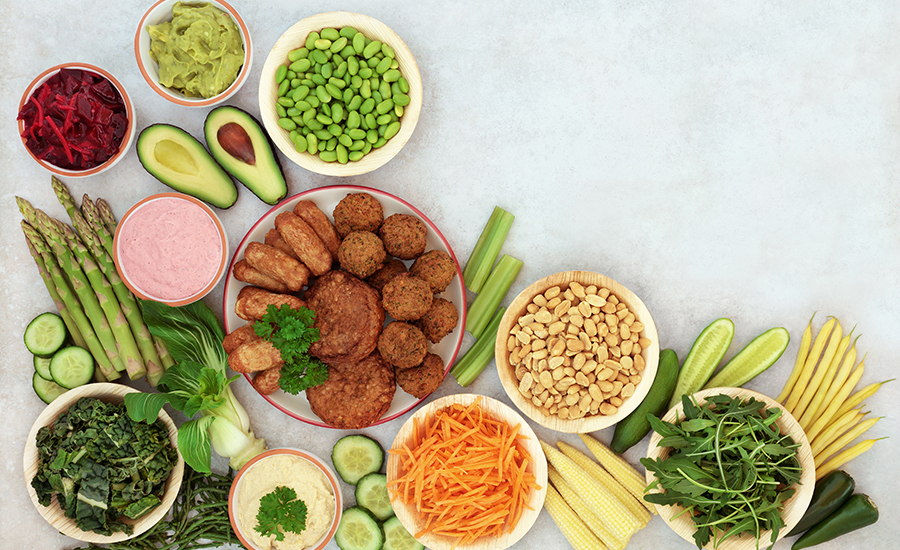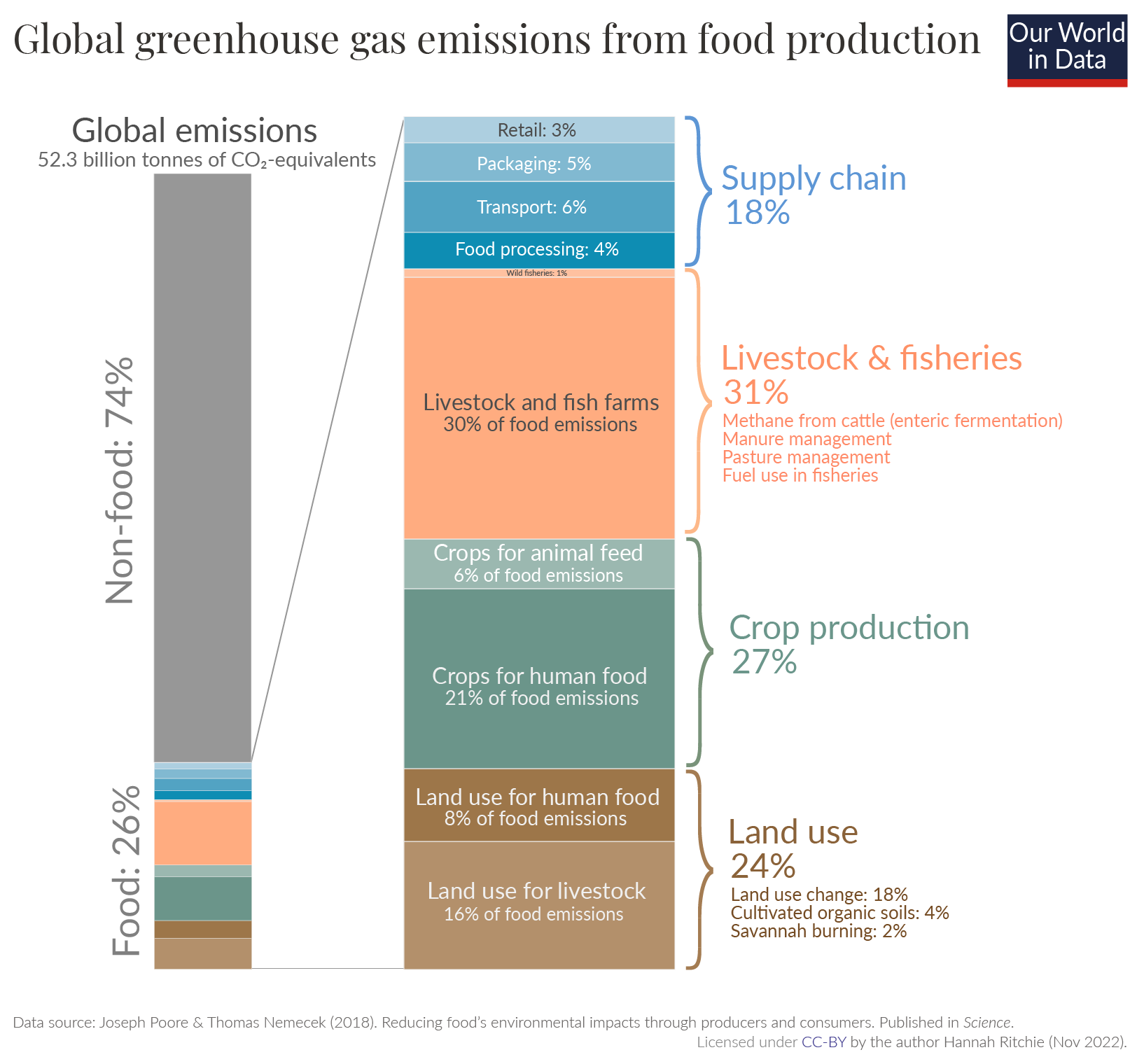A Primer on Alternative Protein
Ever since I read this fantastic article on cultured meat half a year ago, I’ve been absolutely hooked on the alternative protein space. The industry is relatively nascent and very complex, with few clear beginner friendly resources to guide newcomers into the space. As someone with no biology/food science background, I have the unique opportunity to write about my learnings from a layman’s perspective. This article will give the reader an overview of the alternative protein space, its incredible potential, and some of its problems. I ultimately hope this article increases the number of people working in this space, or at minimum increases readers’ willingness to buy alternative protein products.

What is alternative protein?
The Good Food Institute has a great definition for alternative protein:
“Alternative proteins are proteins produced from plants or animal cells, or by way of fermentation. These innovative foods are designed to taste the same as or better than conventional animal products while costing the same or less.”
What exactly is protein?
Proteins are microscopic workers that perform major functions throughout an organism. In humans they perform essential jobs like helping your muscles move, carrying messages in your brain, and helping your body fight off germs. All proteins are composed of combinations of 20 building blocks known as amino acids. The human digestive system takes protein from food and breaks it down into amino acids, which are then used to build functional proteins for the body.
Humans typically get a lot of their protein from conventional meat products - a fact that the alternative protein industry hopes to change.
Alternative protein comes from multiple different technological sources (listed in order from most mature to least mature):
Plant based - As the name suggests, this category encompasses protein derived from plants. This technology is what your average consumer is most familiar with and is what supplies the protein for many of the imitation meat products in supermarkets at the moment.
Precision fermentation - A less publicly known technology, but one that has been well established in the pharma/chemical production space for many decades. Precision fermentation is commonly compared to beer production. Yeast cells used to make beer have instructions in their DNA that give them the power to produce alcohol from sugar. Modern biotechnology has given us the ability to insert instructions for all kinds of different molecules into the DNA of microbes. With precision fermentation, instructions for specific proteins (like animal protein!) are inserted into a specific microbe. The microbe is then fed nutrients so the microbe is able to duplicate while producing the protein of interest. There are a few other types of fermentation, but precision fermentation is the "hottest" fermentation technology in the alternative protein space at the moment.

Cultured meat - Also referred to in media as cell based meat, lab grown meat, or cultivated meat. The process of growing cultured meat involves taking cells from an animal, placing the cells in a container that provides all of the proper nutrients that an animal’s body usually would, and allowing the cell to naturally grow and duplicate. With one animal cell, one could theoretically grow infinite amounts of meat to feed the human population. While the technology is still relatively new and cost of production is much too high for your average consumer, the promise of producing real meat without all the negative externalities is worth pursuing. The US has recently made major progress, with the first cultured chicken meat sold at two fine dining establishments, one in San Francisco and one in DC.

Molecular farming - The newest kid on the block. Molecular farming can be thought of as a combination of plant based and precision fermentation. Instead of inserting the instructions for a specific protein into a microbe, the instructions are inserted into a plant. The plant is then grown like any other crop and is later processed to extract the protein of interest. This new approach has the potential to be less capital intensive when compared to other techniques, and has the advantage of existing downstream processes and infrastructure.
It is important to note that products created from alternative proteins don’t wholly come from one of the aforementioned technology sources. End products for consumers can contain protein created from multiple different technologies. For example, Impossible Foods uses soy protein derived from soybeans, but also has a “heme” protein produced from precision fermentation. Some alt protein companies are currently developing hybrid products that blend plant based protein and cultured animal fat.
The impact of expanding alternative protein
Expanding the alternative protein space has all sorts of beneficial impacts, some obvious and some less so:
Reducing animal factory farming - The most obvious benefit. More people eating alternative protein means less people eating meat, reducing demand for a global industry that slaughters over 80 billion animals a year. I won’t dive further into this, as there are already many sources that explore how inhumane factory farming is and how intelligent farm animals are.
Mitigating greenhouse gasses - Meat production and consumption accounts for about 13.78% of the global greenhouse gas emissions. We have to drastically cut this number down to keep our earth hospitable for future generations.

Reducing world hunger - Our world population is currently 7.8 billion and is projected to grow to 10 billion people by 2050. Meat production is incredibly calorie inefficient - “about 25 calories is required to create just 1 calorie of beef. The ratio for pork is nearer 15-to-1. Even the most efficient meat, chicken, requires 9 calories of input to produce just 1 calorie of food.” Moving to diets powered by alternative protein allows us to sustainably feed this growing population by reducing our land and energy use. Land use reduction is particularly important as our global soil supply is dwindling.
Reducing disease risk - Antibiotics are heavily used on farms because there are so many animals raised in close proximity. Without antibiotics, disease would make factory farming unfeasible. However, due to the heavy usage of antibiotics, the viruses and bacteria that are able to survive and evolve in that environment become “superbugs” that are resistant to antibiotics. These superbugs have the potential to wreak havoc on society if and when they jump to humans, just like how COVID-19 did when it jumped from an animal host to humans.

Improving human health - Studies have shown that people with high amounts of meat consumption have increased risk of heart disease due to elevated levels of saturated fat and cholesterol. With the technology behind cultured meat, companies will be able to tweak and improve nutrient profiles of meat products. As Uma Valeti, founder of Upside Foods, states, “whether that’s less saturated fat and cholesterol, or more vitamins or healthy fats…imagine if we could produce a steak with the fatty acid profile of salmon.” If this vision holds true, we could see a future where humans become healthier without any changes to their diet.
Noteworthy problems facing industry
Even though alternative protein is incredibly beneficial to society, there are still many obstacles preventing the industry from reaching its full potential:
Biomanufacturing capacity - Current methods for precision fermentation and cultured meat both need bioreactors, a large tank in which cells grow. Historically bioreactor developers have typically targeted the pharma industry, which is a low-volume high-margin business. Even if all of the existing bioreactor capacity was repurposed to grow food, it wouldn’t be enough to “feed even 0.01% of the global population”. The infrastructure to develop the number of bioreactors necessary to support the transformation of our food systems simply does not exist at the moment.
Evolving science - This is less the case for plant based protein, but for other technologies there is an incredible amount of science that is still actively being developed, with little preexisting public research to work off of. This means risky, expensive, and time consuming amounts of R&D for new companies, as well as a lack of a clear state of the art. Without an obvious optimal manufacturing process, it will be difficult for entrepreneurs to create B2B companies in the space to help products move down the cost curve. Just last year New Age Meats, one of the earliest companies in the cultured meat space, shut down due to its inability to move from the R&D phase to the production phase.
Difficulty with funding - Overall venture capital funding in the space has slowed from 5.1 billion in 2021 to 2.9 billion in 2022. Most of this slowdown can be attributed to the overall macroeconomic slow down, as investor interest in the space relative to other spaces still seems quite healthy, but a reduction in investment still hurts the space. In addition, the current international investment of 1 billion dollars a year is far from the estimated 10 billion dollars per year needed to fuel the industry (source on page 51-52).
Cost - Most plant based products still have a premium over meat products. Cultured meat is still far too expensive for consumers and plant based products like Impossible Meat are more expensive than ground beef at the grocery store. To make an impact, upstream ingredient costs need to come down, economies of scale need to be achieved, bioprocesses need to be optimized, and more.
Organoleptic (taste and sensory) properties - While there are many meat alternatives out there at the moment, most of them are still lacking in taste and sensory qualities when compared to traditional meat. “Research shows that key attributes such as taste, texture and a perceived ‘lack of naturalness’ are barriers to purchasing plant-based meats. Of those surveyed, 42% said plant-based meats simply don’t taste as good, with almost a third (32%) saying they don’t find plant-based meats appealing.” As food industry vet, Keren Kles, states, “previously alt protein was ready to eat, but we’re now evolving the product to be ready to cook. As a result, alternative protein companies are currently challenged with the task of providing a raw product that behaves as one would expect on the pan, and tastes as one would expect after a variety of ways of cooking.”
Additional Resources
Ultimately this article only scratches the surface of the industry and hopefully leaves you with a greater understanding of the vast potential of the space as well as the large obstacles that need to be overcome. If you’d like to dig in further, some resources I’ve personally found very helpful are:
Robert Yaman’s Biology Learning Cheat Sheet - Great approach to learning about the space as a beginner
Red to Green Podcast - I recommend the whole podcast but season 1 (cultured meat) and season 6 (fermentation) are both especially relevant
The Future of Protein Production Podcast - Earlier episodes are harder to listen to but the podcast quality improves as the first season progresses
Cultured Meat and Future Food Show
The Spoon - Food tech news media to help keep up to date with current events in the food tech space
The Good Food Institute - one of the biggest leaders in the space with an incredible amount of free resources. In particular I recommend:
- GFI science deep dives for each of the alternative protein pillars
- The GFI Mentorship program where you can chat with experienced alternative protein veterans
The Thought Emporium - high quality videos that show the actual labor behind the science of precision fermentation and cultured meat
